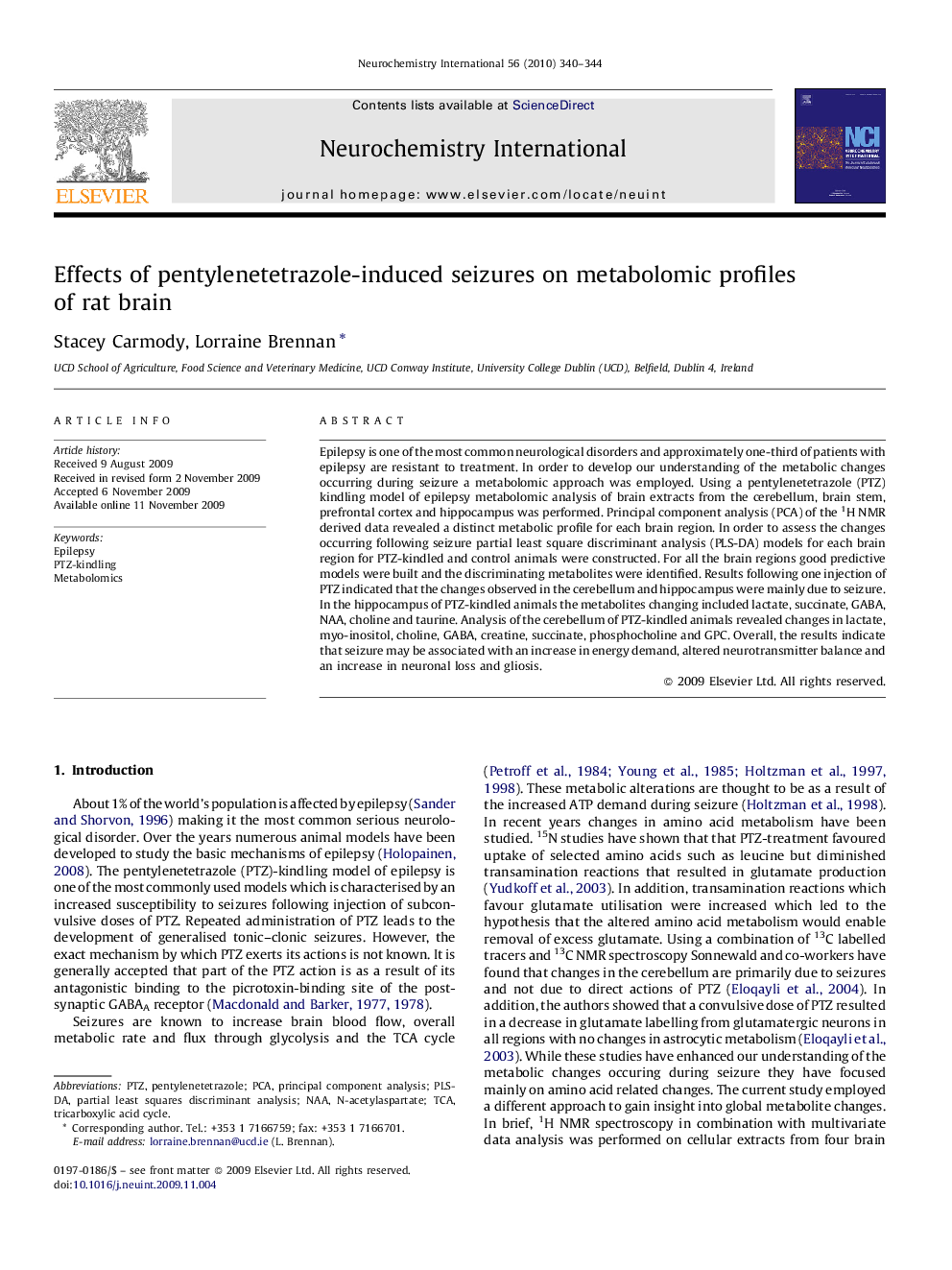| Article ID | Journal | Published Year | Pages | File Type |
|---|---|---|---|---|
| 2201573 | Neurochemistry International | 2010 | 5 Pages |
Epilepsy is one of the most common neurological disorders and approximately one-third of patients with epilepsy are resistant to treatment. In order to develop our understanding of the metabolic changes occurring during seizure a metabolomic approach was employed. Using a pentylenetetrazole (PTZ) kindling model of epilepsy metabolomic analysis of brain extracts from the cerebellum, brain stem, prefrontal cortex and hippocampus was performed. Principal component analysis (PCA) of the 1H NMR derived data revealed a distinct metabolic profile for each brain region. In order to assess the changes occurring following seizure partial least square discriminant analysis (PLS-DA) models for each brain region for PTZ-kindled and control animals were constructed. For all the brain regions good predictive models were built and the discriminating metabolites were identified. Results following one injection of PTZ indicated that the changes observed in the cerebellum and hippocampus were mainly due to seizure. In the hippocampus of PTZ-kindled animals the metabolites changing included lactate, succinate, GABA, NAA, choline and taurine. Analysis of the cerebellum of PTZ-kindled animals revealed changes in lactate, myo-inositol, choline, GABA, creatine, succinate, phosphocholine and GPC. Overall, the results indicate that seizure may be associated with an increase in energy demand, altered neurotransmitter balance and an increase in neuronal loss and gliosis.
